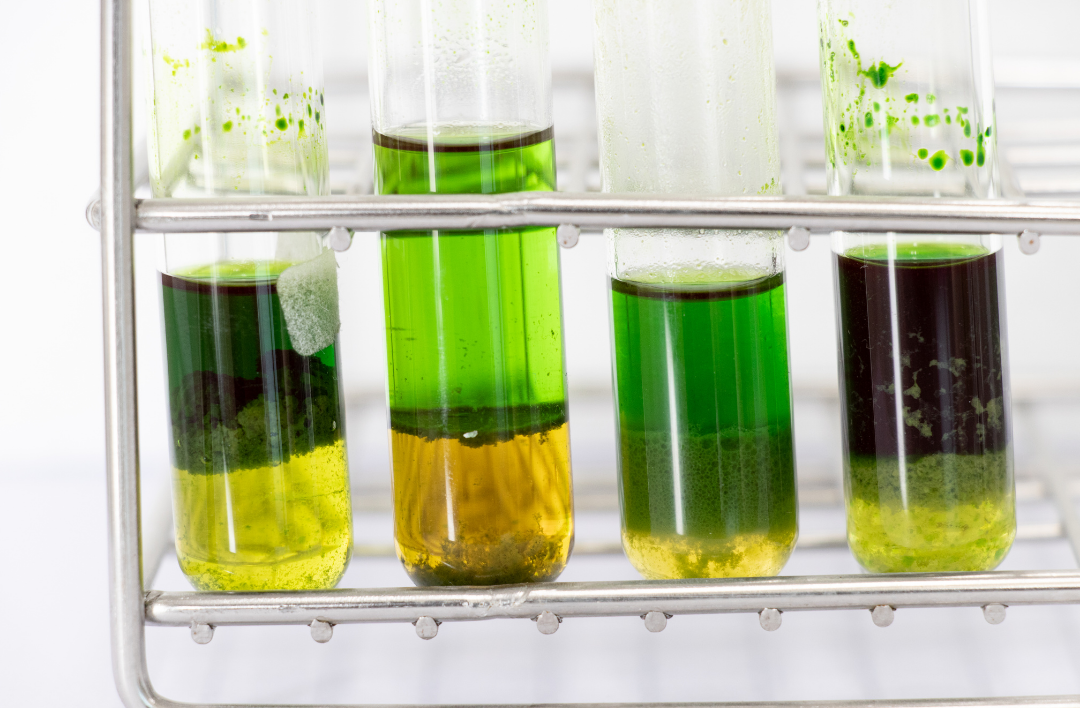Zeytinyağı Bileşenleri
22-06-2023
11:53

Zeytinyağının sabit değişmez bir bileşimi yoktur, zeytinyağını oluşturan bileşenlerin çeşitliliği ve miktarı birden fazla faktörden etkilenir;
• Zeytinin yetiştiği coğrafya; yeryüzünde aynı paralelde yetişen zeytinlerin özellikleri benzerlikler taşır.
• Zeytin tarımının yapıldığı alanın deniz seviyesinden yüksekliği; örneğin bazı çalışmalarda rakım yükseldikçe zeytinin oksidatif dayanıklılığının (zeytinyağında kalite kıstaslarından biri yağın oksidasyon seviyesidir) arttığı bulunmuştur.
• Zeytinin hasat edildiği yıldaki iklim değişiklikleri.
• Zeytin tarımı yapılan bahçede uygulanan tarımsal yöntemler; sulama, gübreleme, zararlılarla mücadele yöntemleri, budama biçimi.
• Zeytinyağının elde edildiği zeytinlerin çeşidi, zeytin türlerinin kendilerine özgü aromaları mevcuttur, zeytinyağı birden fazla zeytin türünden de elde edilmiş olabilir.
• Zeytinin olgunluk derecesi; zeytinin erken ya da geç hasat edilmesi içeriğindeki biyofenol ve squalen gibi minör bileşiklerin seviyelerinde ve aromasında farklılığa neden olur.
• Zeytin hasat yöntemi; hasat sırasında zeytinin minimal hasarla daldan koparılması ve mümkünse altı saat içerisinde işleme alınması amaçlanır, süre uzadıkça zeytinin fermantasyon nedeniyle çürüme sürecine girmesi yağın aromasında olumsuz değişiklikler ortaya çıkabilir.
• Üretim aşamasında kullanılan yöntem; ön eleme ile çürük zeytin, yaprak ve yabancı cisimlerin ayrıştırılması, üretim için kullanılan makinanın teknolojisi, üretim bandındaki ısı kontrolü ve makinanın temizliği.
• Depolanma/saklanma şartları ve depolanma süresi; depolanma sürecinde ısı, ışık, oksijenle temas süresi gibi değişkenler uzun zamanda aromayı etkileyecektir.
Zeytinyağı karmaşık bir sıvı bileşendir. İçeriğinde zeytinin kabuğundan, etinden ve çekirdeğinden gelen, mikrobesin olarak tanımlanan, birden fazla biyo-aktif fito-kimyasal mevcuttur.
Ek olarak, bitkisel kaynaklı moleküller, uçucu hoş kokulu bileşenler, suda eriyen bileşenler ve gözle görülmeyen zeytin parçacıkları barındırır.
İçeriğindeki moleküller kabaca iki gruba ayrılır:
• Majör bileşenler; sabunlaşan moleküller; trigliseritler ve yağ asitleri.
• Minör bileşenler; sabunlaşmayan moleküller; hidrokarbonlar, steroller, polifenoller, tokoferoller, aromatik/uçucu bileşenler, yağ alkolleri, diterpen, alkoller ve mumlar, mono ve digliseridler, pigmentler.
Majör Bileşenler
Majör bileşenler, toplamda, yağın yaklaşık %50-80’nini oluşturur. Yağın içeriğinde bulunan kimyasal moleküllerin ise %99'u majör bileşenlerdir.
Zeytinyağında en fazla bulunan majör bileşenler tekli doymamış yağ asitleri olup, özellikle tekli doymamış yağ asidi olan oleik asit açısından zengindir. Yağın içeriğindeki yağ asitlerinin ortalama %75 tekli doymamış yağ asitleridir, bunlardan oleik asit ortalama %70 ile en fazla olanıdır. Zeytinyağının insan sağlığı ile ilişkili olumlu etkilerinin bir kısmı genel olarak içeriğindeki bu bileşen ile ilişkilendirilmiştir.
Doymamış yağlar "tekli doymamış" ve "çoklu doymamış" yağlar olarak ikiye ayrılırlar. Doymamış yağlar vücudun gereksinim duyduğu yağ asitlerinin temel kaynaklarıdır. Tekli doymamış yağ asitleri insan vücudunda sentez edilebilirler. Beslenme alışkanlığı açısından bakıldığında; tekli doymamış yağların, günlük kalori gereksiniminin maksimum %15'ini, çoklu doymamış yağ asitlerinin ise maksimum %10'unu karşılayacak şekilde tüketilmesi önerilmektedir. Oda sıcaklığında sıvı haldedirler ve büyük çoğunluğu bitkisel kaynaklıdır. Doymamış yağ asitleri dış ortamda kolaylıkla okside olabilir ve bundan dolayı fito-kimyasal özelliklerini kaybedebilirler. Özellikle moleküldeki çift bağın sayısının artması oksidasyonu kolaylaştırmaktadır. Metaller, ısı, güneş ışığı gibi faktörler oksidasyonu hızlandırır. Bilinen bütün doymamış yağ asitleri oda ısısında sıvı haldedir.
Zeytinyağı, diğer sıvı yağlar (ayçiçek, mısırözü, soya vb.) ile karşılaştırıldığında; yağ asidi dağılımı olarak içeriğinde en fazla tekli doymamış yağ asiti içeren yağdır.
Majör Bileşenler
Majör bileşenler, toplamda, yağın yaklaşık %50-80’nini oluşturur. Yağın içeriğinde bulunan kimyasal moleküllerin ise %99'u majör bileşenlerdir.
Zeytinyağında en fazla bulunan majör bileşenler tekli doymamış yağ asitleri olup, özellikle tekli doymamış yağ asidi olan oleik asit açısından zengindir. Yağın içeriğindeki yağ asitlerinin ortalama %75 tekli doymamış yağ asitleridir, bunlardan oleik asit ortalama %70 ile en fazla olanıdır. Zeytinyağının insan sağlığı ile ilişkili olumlu etkilerinin bir kısmı genel olarak içeriğindeki bu bileşen ile ilişkilendirilmiştir.
Doymamış yağlar "tekli doymamış" ve "çoklu doymamış" yağlar olarak ikiye ayrılırlar. Doymamış yağlar vücudun gereksinim duyduğu yağ asitlerinin temel kaynaklarıdır. Tekli doymamış yağ asitleri insan vücudunda sentez edilebilirler. Beslenme alışkanlığı açısından bakıldığında; tekli doymamış yağların, günlük kalori gereksiniminin maksimum %15'ini, çoklu doymamış yağ asitlerinin ise maksimum %10'unu karşılayacak şekilde tüketilmesi önerilmektedir. Oda sıcaklığında sıvı haldedirler ve büyük çoğunluğu bitkisel kaynaklıdır. Doymamış yağ asitleri dış ortamda kolaylıkla okside olabilir ve bundan dolayı fito-kimyasal özelliklerini kaybedebilirler. Özellikle moleküldeki çift bağın sayısının artması oksidasyonu kolaylaştırmaktadır. Metaller, ısı, güneş ışığı gibi faktörler oksidasyonu hızlandırır. Bilinen bütün doymamış yağ asitleri oda ısısında sıvı haldedir.
Zeytinyağı, diğer sıvı yağlar (ayçiçek, mısırözü, soya vb.) ile karşılaştırıldığında; yağ asidi dağılımı olarak içeriğinde en fazla tekli doymamış yağ asiti içeren yağdır.
Ortalama %10'u çoklu doymamış yağ asididir ve neredeyse tamamı linoleik asitten oluşur.
Yağın ortalama %15'i doymuş yağ asididir ve palmitik asit en fazla olanıdır. Doymuş yağ asidi molekülünde bulunan karbon bağlarının hepsi hidrojen ile dolu olup oldukça dayanıklı bir yapıya sahiptir. Yüksek sıcaklıklara kadar ısıtıldıklarında bile bütünlüklerini büyük oranda muhafaza edebilirler ve kolay kolay bozulmazlar. Oda sıcaklığında katı ya da yarı katı haldedirler. Genel olarak hayvansal yağlarda (kuyruk yağı, tereyağı, kaymak vs.) ve tropikal yağlarda (Hindistan cevizi yağı) bulunan doymuş yağların fazla tüketilmesi kolesterol düzeyi yükselmesi, kalp hastalıkları, kanser ve obesite riskini artırır.
Minör Bileşenler
Zeytinyağı minör bileşenlerin çeşitliliği açısından zengin bir yağdır, yağın toplamda yaklaşık % 3’ünü, yağın içeriğinde bulunan fito-kimyasalların ise %1’ini oluştururlar.
Zeytinyağı içeriğinde 230 dan fazla minör bileşen tanımlanmıştır. Bu bileşenler yağ molekülü değildir, yağın kendine has yöresel karakterini verirler.
Zeytinyağının içeriğinde bulunan minör bileşenlerin bir kısmı organoleptik özelliktedir, bir başka deyişle duyularımız aracılığı ile algılanabilir, duyu organlarımızı uyarabilirler. En çok bilinen organoleptikler; triterpen alkoller, fenolik moleküller, tokoferoller, squalen molekülüdür. Bu moleküllerin, laboratuvar ortamında, insan biyolojisinde rol alan hücresel fonksiyonlarda rol aldığı gösterilmiştir. Bu bileşenlerin insan metabolik süreçlerinde birden çok yararlı işlevleri olduğuna dair bilimsel kanıtlar mevcuttur. Bundan dolayı; zeytinyağı, mikro besin özelliği olan bir yağdır.
Bu gruptaki moleküller, diğer bitkisel yağlarda daha az bulunmaktadır.
Zeytinyağı dışındaki tohum kaynaklı yağların (susam, ayçiçeği vb) üretim süreçleri yüksek ısı ve kimyasal uygulamalar (rafinasyon) barındırır. Yağın tüketilebilmesi için gerçekleştirilen bu rafinasyon işlemi mikrobesin olarak değerlendirilen fitokimyasalları uzaklaştırır ya da parçalar, sonuçta; insan hücre metabolizmasında yararlı fonksiyonları olan bu mikrobesinlerin yağın içeriğindeki konsantrasyonu azalır. Bundan dolayı, beslenme açısından bakıldığında, çiğ tüketilen rafine edilmemiş natürel zeytinyağı diğer yağlardan daha sağlıklı bir seçenektir.
Derleyen: Uğur Saraçoğlu (ugisaracoglu@yahoo.com.tr)
Kaynakça:
1. Dünya Zeytin Ansiklopedisi; Uluslararası Zeytin Konseyi; Fausso Luchetti, 1997.
2. Zeytinyağı; Fahrettin Göğüş, Mücahit Taha Özkaya, Semih Ötleş, Eflatun Yayınevi, 2009.
3. İzmir Zeytin Sempozyumu; Ölmez Ağacın Peşinde/Zeytinime Dokunma, 2-3 Eylül 2015.
